Fishing on a balancer in winter actively takes out other popular methods of fishing for a winter predator – ratlin,
spoon bait ,
rewinder and other fools. Many winter anglers believe that balances are the best bait for catching an ice predator. Our opinion is that there is no perfect bait, as well as a method of fishing. Each bait must be used in optimal conditions for its use (place-time-depth-fish activity and other factors). And even better, if all the baits are used in symbiosis, so as not to lose bites and catch because of their tenacity where you can get them, being more flexible and skillful.
Balancer – non-attachment cast bait made of lead and other materials for catching predatory fish (primarily
perch , pike perch and
pike ) with a horizontal position relative to the bottom. It is used for fishing in a plumb line in freeze-up and in liquid water, although less often. In a typical equipment it has two side hooks and one hanging tee, which, when fishing perch, is desirable to decorate with a bead, a drop of epoxy and more. The tail part – a blade or feather made of plastic, animal hair and hair and other materials – acts as a stabilizer and directly affects how the bait will play in the water. In a standard animation, a high-quality adjusted balance makes a movement like an inverted figure eight (photo below).
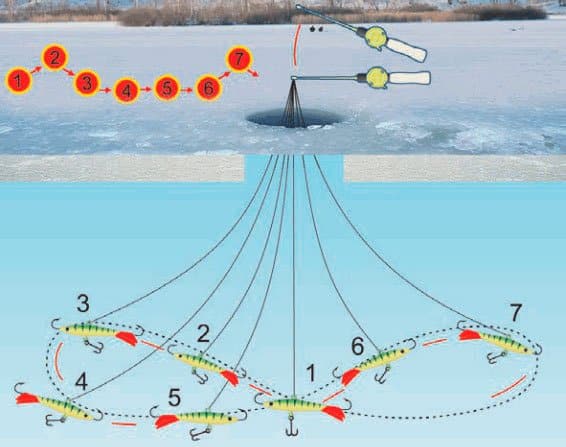
- What are the strengths and weaknesses of the balancer – when to give preference to this type of bait?
- Catching balancers for winter fishing – features of choice depending on the situation and the predator
- Who are we hunting for?
- What about body colors?
- Tail coloring – what does it affect?
- Position of the predator
- Features of winter fishing on a balance beam: tactics, animation
- Going to the body of water
- Where to look for a predator
- More about animation features for active and passive predatory fish
- Fishing rod equipment for fishing on a balancer in winter: whip, nod, line, leash
- Fishing rod selection
- About nods
- Fishing line or cord; diameter
- Do I need a leash
- How to tie the balancer to the line
- Поделиться ссылкой:
What are the strengths and weaknesses of the balancer – when to give preference to this type of bait?
It should be noted that the balancer catches the active fish better, due to the active play during animation. Therefore, the use of balances is more appropriate for the first ice and in the spring, before the ice melts. To successfully fish in the wilderness, you need special types of balancers and how to animate them (see below).
Catching balancers for winter fishing – features of choice depending on the situation and the predator
There is a simple rule: the deeper and stronger the current, the more compact and heavier the balancer should be. The size of the used balancers depends not only on the fishing conditions, but also on the predator that is supposed to be hunted.
Who are we hunting for?
A catchy pike perch balancer is usually in the size of 5, 7 and 9 cm.And the most working station wagon is a seven, if, of course, we are not talking about typical pike-perch pits, where 9 and 11 cm will be just right, since 7 cm is banal animate at that depth. And so that there are fewer descents, it is worth replacing the central tee with a larger one, this will reduce the number of descents of fanged predators, since the pike perch often presses its prey to the bottom, and a powerful hook is needed to pierce its bony mouth.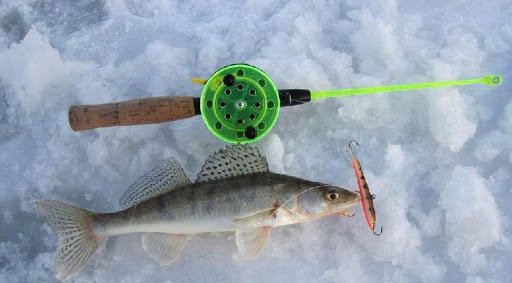

But consider! That any framing element on the tee (drop, cambric, bead, etc.) will lead to the fact that the bait starts to play not as sweepingly as without it. This can be a plus when fishing for pike, passive perch or walleye with low and not fast short pulls. But also a minus, if you need to quickly collect an active predator from a distant water area. What to do? The best option is to have two identical lures for different fishing conditions. This is especially true for the most common and popular balancers.
More details about how the winter balancers behave under water in the video of the Shcherbakov brothers: https://youtu.be/2Ji9EvXWkQk About specific models of balancers that were included in the rating of the best in 2020, as well as the features of their use, you can
read here . For pike, balancers up to 11 cm are used, with a wide, but not aggressive play. The pike is known to love wide-amplitude and low-frequency play. In more detail about the pike balancers, their animations, as well as the
rating of the best for 2020 by toothed .
What about body colors?
The first thing you need to start from, especially when fishing at depths of up to 3-4 meters, is the main food base in the reservoir. If the gudgeon prevails, then we select the color for it. Verkhovodka – blending colors, etc. In general, with normal transparency and illumination, naturals should be used at shallow depths.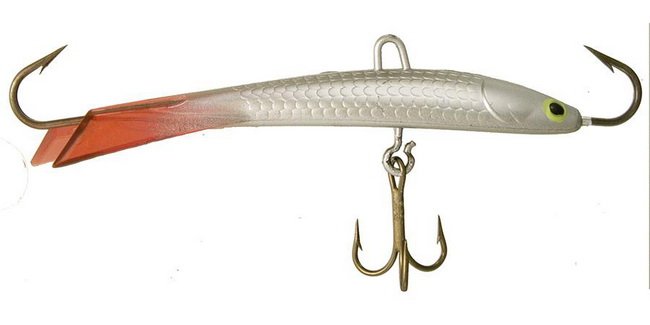

It is worth noting that pike perch does not breathe very evenly to the luminous balancers, it eats them not only at night, but also in the daytime, when it would seem worth using natural fish.
Pay attention to hybrid lures, where one part of the bait is covered with one natural color, and the other, for example, fluo red.
Tail coloring – what does it affect?
Marked and bright colors of the caudal fin visually increase the size and volume of the balancer, and transparent, on the contrary, reduces the size. It is from this thesis that you need to make a start when choosing a bait for a different predator that is caught in the winter. So, perch often prefers visually small baits, but at the same time 3-4 cm balances do not play as seductively as 5-7 ones. What can be done? That’s right – take a five with a transparent tail. The
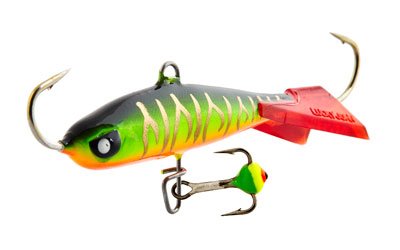
Position of the predator
An important point to consider when choosing a balancer for pike perch and pike is its detectability. Unlike the perch, the bony mouth of zander and hard pike are not always cut by the extreme hooks of the bait, if they are not powerful enough and large. It is always necessary to select hooks so that they are made of thick wire, with high-quality soldering, it is good if they look at each other – this gives the greatest moment of impact, and therefore penetrating ability when attacking a predator or predator than if the pressure went under angle to the horizontal axis of the balance. Therefore, when choosing, pay attention to this moment (it is not in vain that the balance numbers for pike perch and pike are always large from seven and above).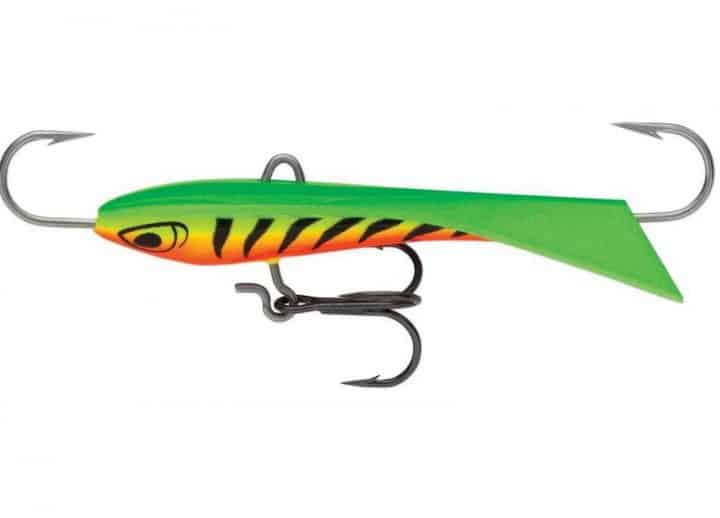

Features of winter fishing on a balance beam: tactics, animation
Going to the body of water
To successfully catch a predator on a balancer, you need to understand the specifics of the reservoir, the object of catch, as well as other nuances – the activity of the fish, its location, preferences, food base, weather conditions. Tactically, this is the case. On the first and last ice, we use balancers, in the wilderness, different spinners are more promising. It should be understood that one game attracts fish to a new hole, but catches a completely different one. A wide and sharp game with a minimum of pauses is a lure for a predator standing in the distance, with such an animation, the balance bar flips from side to side with maximum amplitude, going far from under the hole. The range of explosions is from 30 to 70 cm, depending on the reservoir and depth. We do up to 10 such lifts and move on to the next phase. We make short toss of 1-5 cm so that the bait walks near the axis of the hole. You can write out a step at this stage,going through the ledges of 3-5 cm depth, expanding the processed horizon. It is especially important when fishing for perch and pike that walk in the water column.
How cheeky should the animation be? The rule is as simple as it is effective. The more active the fish, the more active and audacious the animation, the more passive it is, the more lazy and delicate the balancer should play.
At the beginning of winter, we do this – on a new hole, with the help of actively playing balancers, we lure an active predator to the hole with wide sweeps / lowers, choose the most active ones (this is especially effective for zander and perch), then we switch to vertical
spoons , after which bottom spoons go into battle , deaf-dry types and ways of serving balancers and for a snack –
rewoundless .
In the wilderness, it is very rare for predatory fish, especially large perch and pike perch, medium and large pike, to respond positively to the active movements of the decoy bait, therefore it is better to immediately start with spoons, rewinderless ones and animation types focused on passive fish.
Where to look for a predator
Thesis:
- On the first ice, pay attention to the coastal zone, fallen trees, bends and bends of rivers, where rivers flow into larger rivers and lakes. Perch and pike perch can stand on coastal dumps, pike gravitates to various places that can be turned into an ambush – snag, pothole in the bottom, algae. There will be an active search in the vast area. More holes – a large distance between them up to 10-15 meters.
- 3-4 weeks after the formation of ice, the predator rolls down to deeper places and often stands along the coastal and channel slope, in any places where the current becomes slower, if it is a river. Pike perch prefers places at the bottom of the dump, pike and perch often keep along its entire length.
- The wilderness is a time of calm for both fish and fishermen. The deepest points are searched for (depth map, echo sounder, structured, “one grandmother said”). And in such places fishing is conducted. The holes are drilled in a heap, neatly. The pike perch is active at night, when it goes to the tables adjacent to the pits and actively feeds.
- End of freeze-up . A burst of activity, the predator follows the fry, which moves to places where oxygen is saturated. These are dams, confluence of reservoirs, clear water glades, thaws near the coastal zone.
Help the depth map and the information from the old-timers: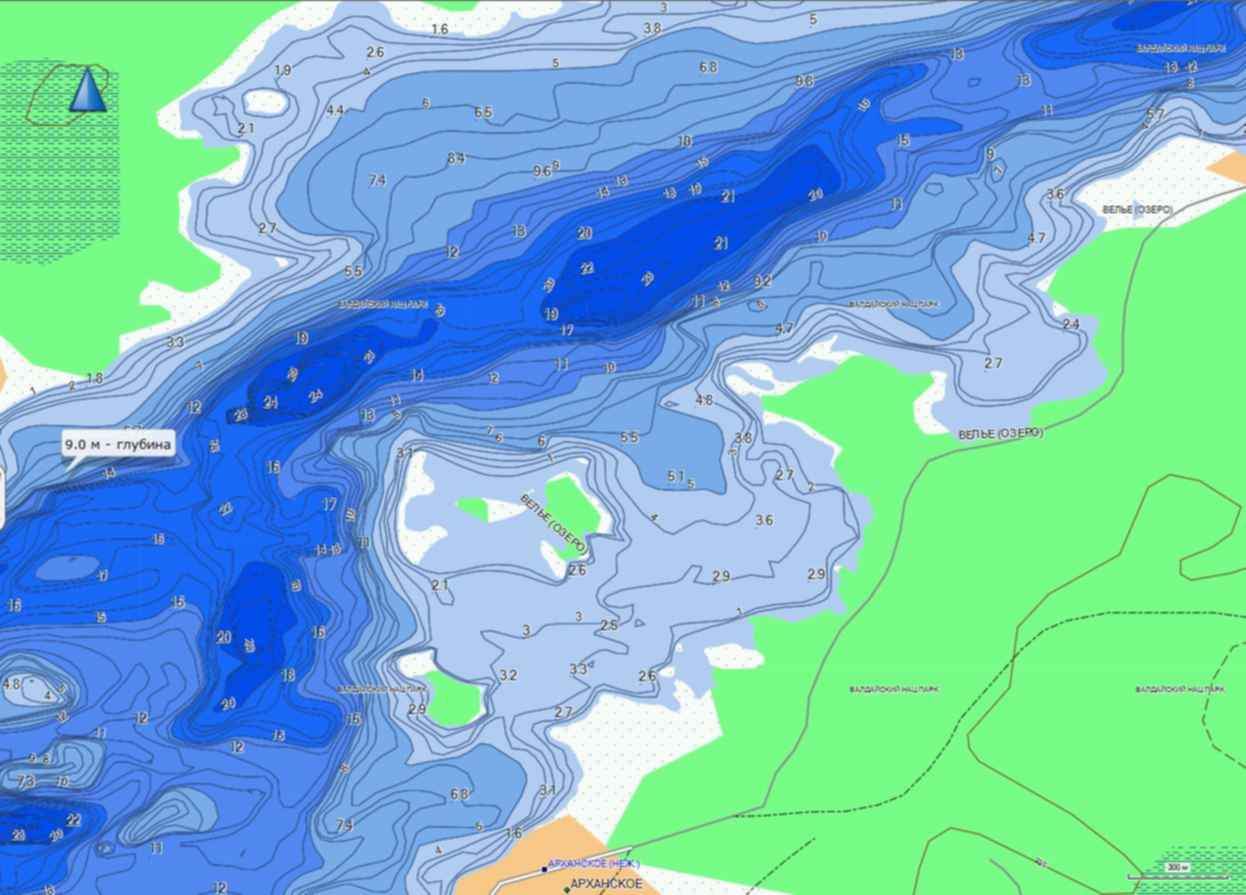
perch ,
pike and perch for winters in our articles. Positions of predatory fish during the winter season (pike perch, perch, pike): Pike-perch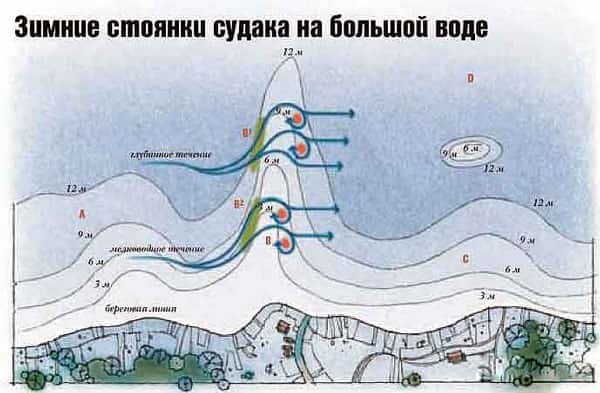
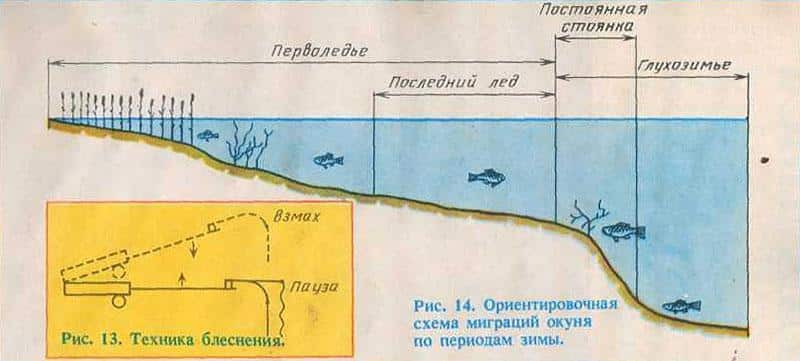
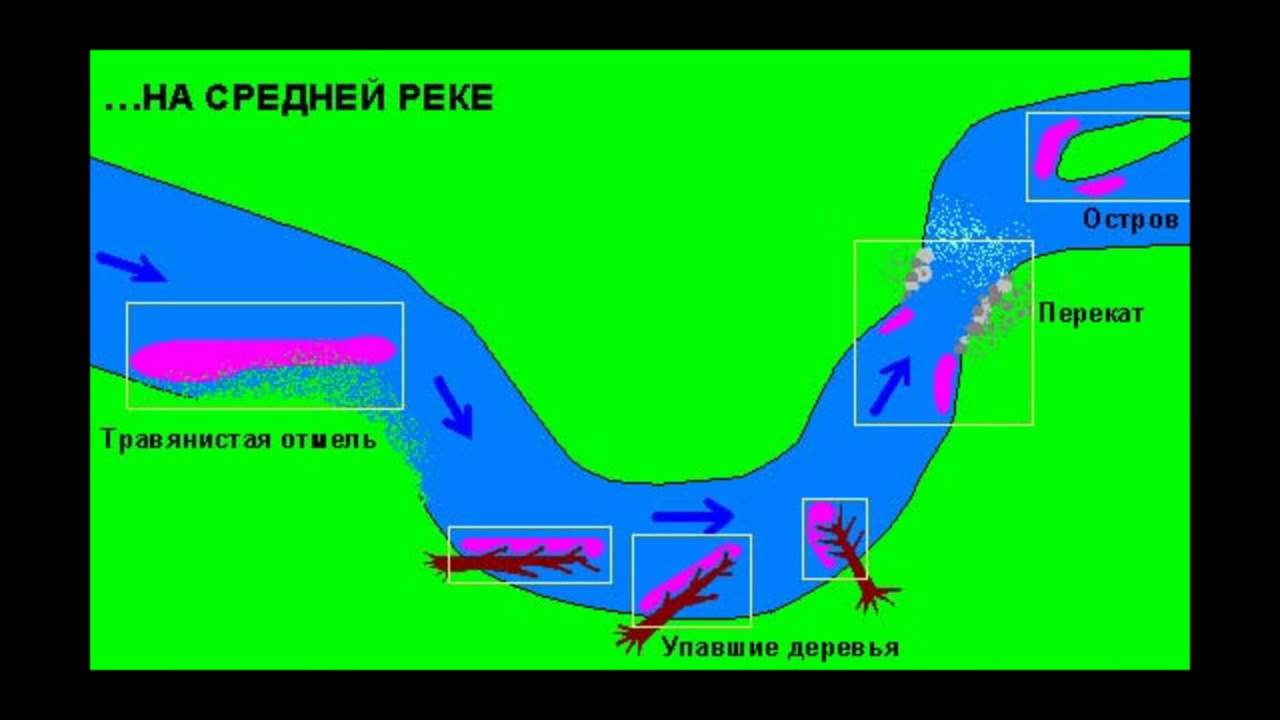
More about animation features for active and passive predatory fish
A standard enticing way to animate the balance bar for active fish at the beginning and end of winter: 
[/ caption] More animation variations that can and should be alternated with each other:
- A variation of the main lift / release animation, in which a pause is made at the final lift point, and lowering with a swing to the sides with the brush. This option allows to slightly slow down the speed of falling balances and at the same time to reduce the swing amplitude.
- The balance bar hits the bottom, then a sharp explosion – the second is even higher and again the fall and hits on the bottom – 2-3 times. And in a circle all the stages.
- Small jigsaw movements at the very bottom, with periodic strikes against it.
Depending on the activity of the fish, the balancer can be used with different types of animation. In the wilderness, when a predatory fish stands at the bottom and passive contemplation prevails in its mood, it is worth using balancers that sink well to great depths and work on the current. These are such lures that have the smallest allowable size, but at the same time the maximum weight. Such tough guys. Additionally, this type of balancers have a less sweeping play, which is the best option for deaf pike perch, perch and pike. For the most passive predator, the following types of play should be used:
- We lower the bait to the bottom and with short throws, with an amplitude of no more than 5-10 cm, raise / lower it down.
- The second method can be compared to mormishing, when the bait rattles near the bottom with the help of short and frequent twitching of the fishing rod. In this case, the balance bar circles almost under the hole. This is especially good for passive perch, pike and small pike perch.
- Using a knock on the bottom, a balance bar equipped with a spaced tee. In this case, the bait is lowered until the bottom decorated tee on a wire touches the bottom (tracked with a nod). Then we begin to knock on the bottom with a tee and raise the dregs. On such a muddyak, striped of all sizes and perch are especially actively going.
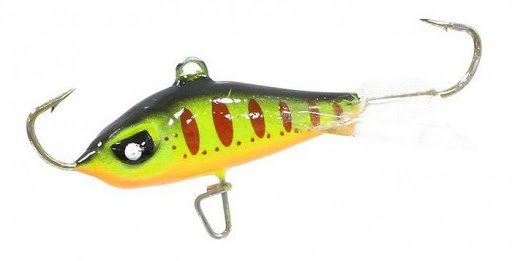
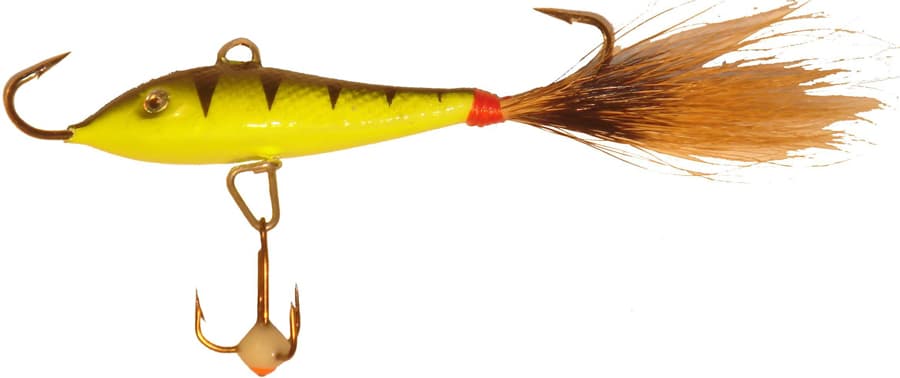
Fishing rod equipment for fishing on a balancer in winter: whip, nod, line, leash
A fishing rod for ice fishing on balancers cannot be universal. It is one thing to catch bait on the shallows by 3 cm, and it is another to catch pike perch or pike at a depth of 8 meters. Each task requires its own rod.
Fishing rod selection
The rigidity of the rod should clearly correspond to the weight of the bait. When playing the balancer, the whip should not fall under the weight of the bait, but only act out and transfer its movements to the hands, this will avoid parasitic movement that can cause a failure in the game. Additional sensitivity is provided by the finger fishing method, when the phalanx of the index finger is placed under the line in order to track all the movements of the bait and the bite of cautious fish.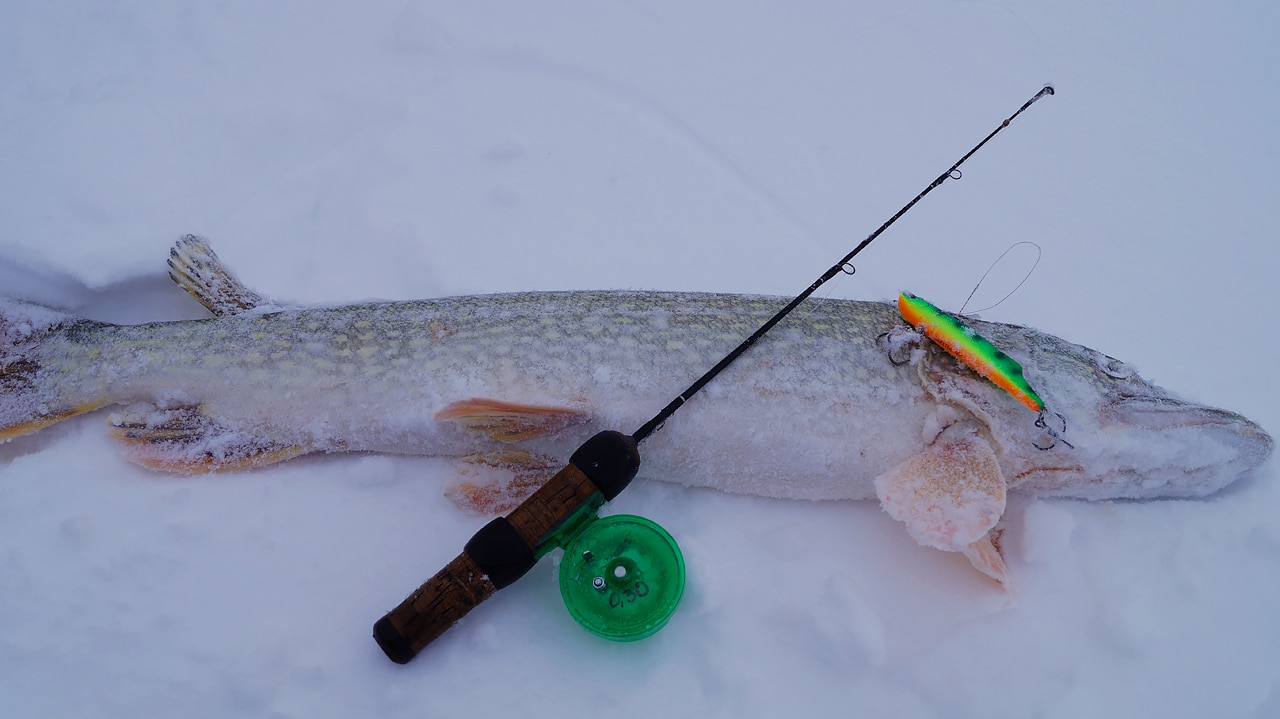
About nods
When fishing with large balance beams 5-7-9 cm, there is no need for nods, the whip itself transfers all the necessary sensitivity to the hand, especially when fishing with a finger. A nod is an unnecessary element. The use of a nod is advisable when using the smallest balances of 2-4 cm when fishing for perch in shallow water and squinting in the midst of frozen thickets of reeds. Either a nod-snot or the thinnest lavsan one is placed.
Interesting to know! The nod brings the play of the vertical spinner to life and can therefore be considered an important piece of rig. But at the same time, the nod interferes with the normal play of the balancer, and therefore the gatehouse for such fishing is placed only in extreme cases.
https://youtu.be/qlKe0-rekPA
Fishing line or cord; diameter
In most cases, during winter fishing, a special frost-resistant fishing line is used. The diameter is selected according to the bait used, the elasticity of the whip and the object of fishing. It is not worth it to be smaller with a diameter. It is necessary that the line stretches minimally during animation, otherwise the desired smooth play of the balance bar cannot be achieved. This is especially true for fishing at depths, in the current, with heavy lures. Therefore, when fishing with primordially “perch” balancers of size 3-4, set the line 0.12-0.16 mm; for large perch and medium zander 5 size – 0.18-0.22 mm; for trophy perch, pike perch and pike 6-9 size 0.28 mm; on trophy pike perch and pike balancers from 9-11 cm and above, you can put a line of 0.3-0.35 mm, – such a powerful bait requires the use of powerful lines that can play it correctly, and the fish on such balancers is rather big.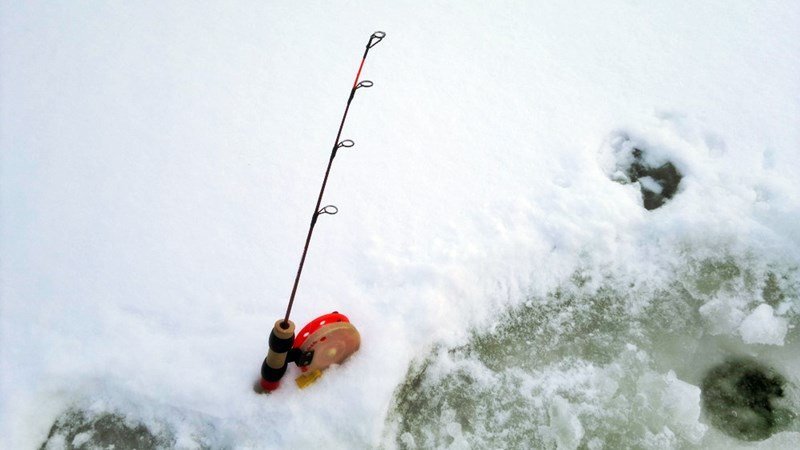

Do I need a leash
Obviously, it makes sense to put a leash only when fishing for pike. It is desirable that it be a thin Kevlar or titanium flexible leader with a minimum diameter. It is also worth considering that when fishing for pike, large balancers are used, and therefore the leash will not spoil the bait game. What can not be said when fishing for 3-5 numbers of perch and pike perch. Nobody is safe from the cuts, but it is better to lose a couple of lures on the cuts and a couple of pikes than dozens and hundreds of cautious perch and pike perch.
How to tie the balancer to the line
The balancer on the line should be in a horizontal position or with a minimum inclination of the head up (less often down). High-quality baits from trusted manufacturers (Spro, Kuusamo, Stry Pro, Lucky John, Rapala and others) are tested under special conditions and do not need any refinement, except for the rarest marriage. But nouns, the Chinese and home-made products can sin by the wrong position in the water, and therefore by malfunctions in the game. But the position of the balancer can be affected by improper rigging, or rather its attachment to the fishing line. If the loop is deaf and rigid, then, firstly, the position of the balance bar may be incorrect due to the rigid fixation, and secondly, the bait so tied loses the proper freedom in its actions. Therefore, we recommend tying the balancers directly to the fishing line with freely tightening knots (rapala, figure eight, clinch),or mount on a clasp. The second method is even preferable, as it allows for a quick change of bait in rapidly changing fishing conditions.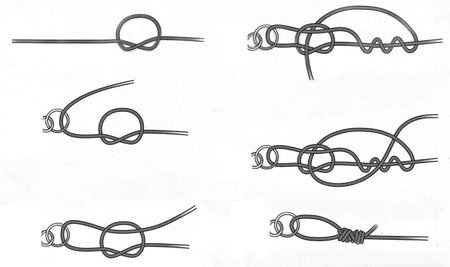
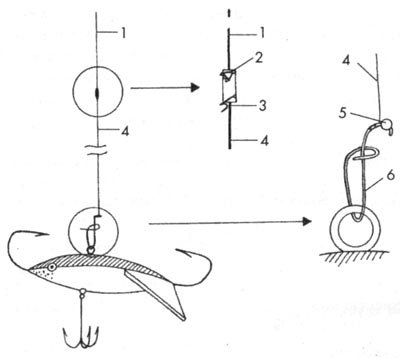
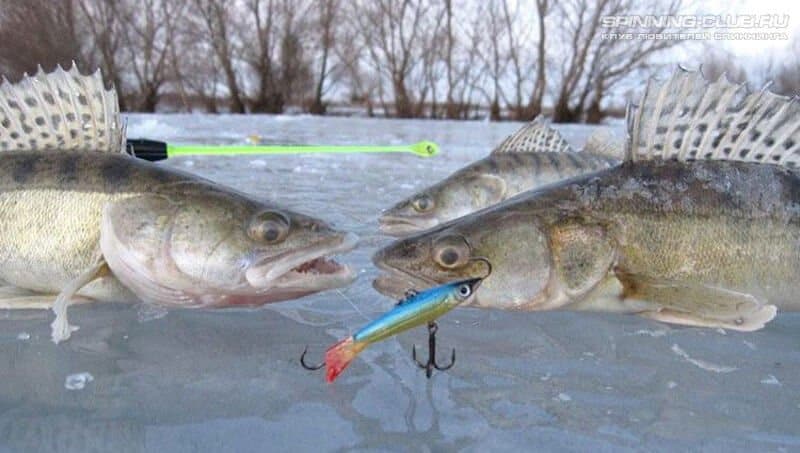
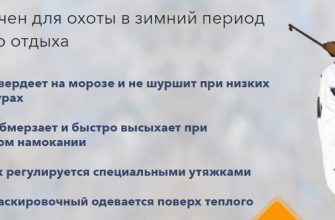
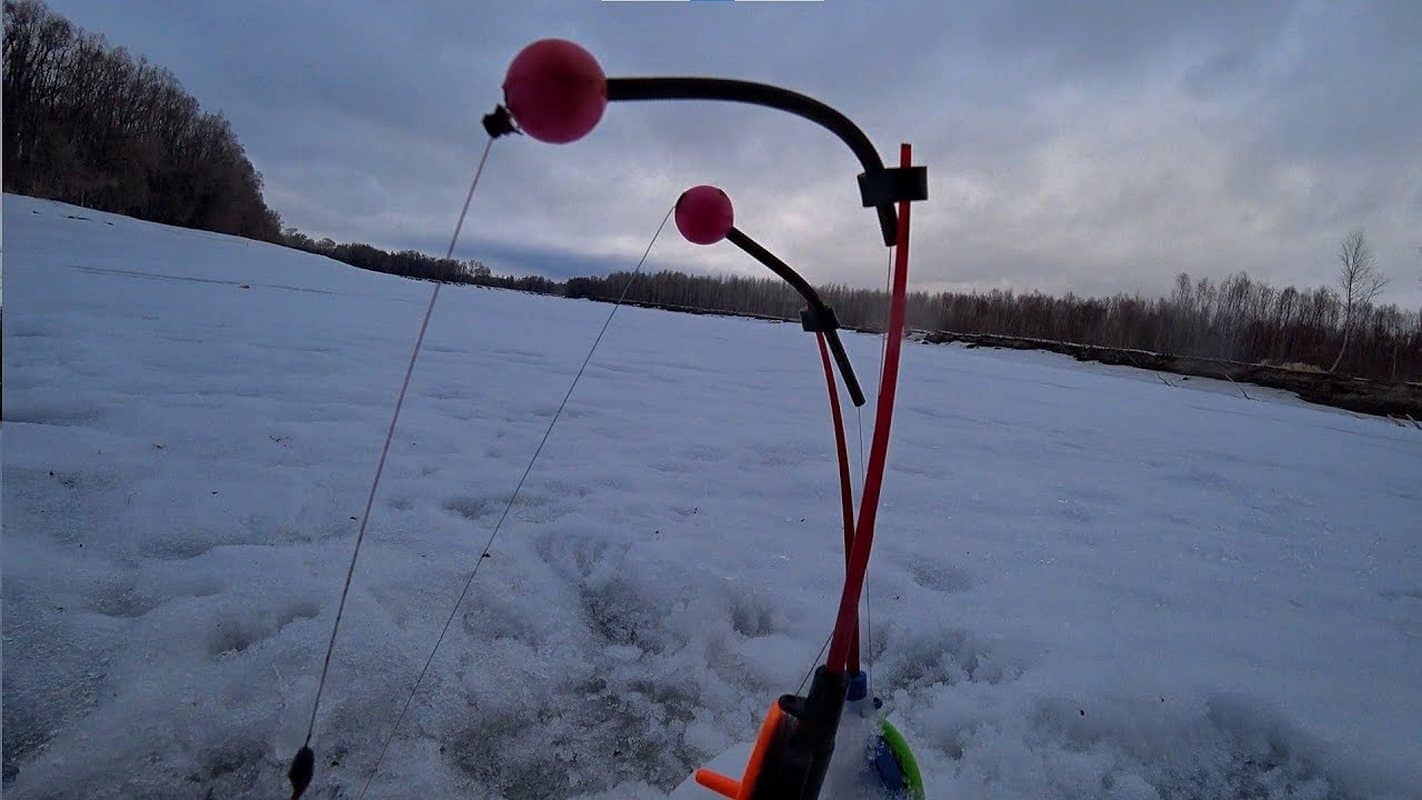

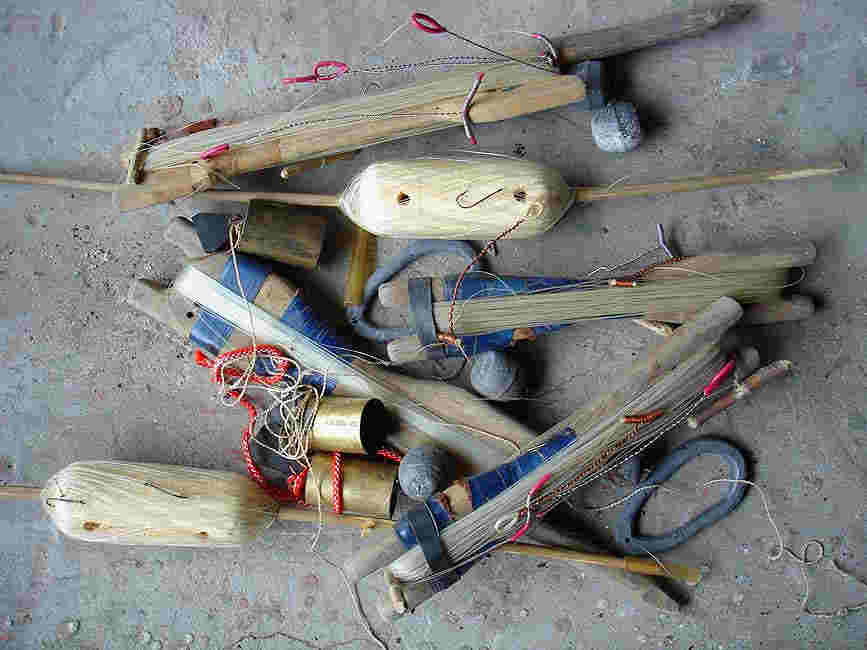
Все написано зрозуміло і цікаво, але якщо ви вже копіюєте інформації с російсько мовного сайту, робіть належний переклад